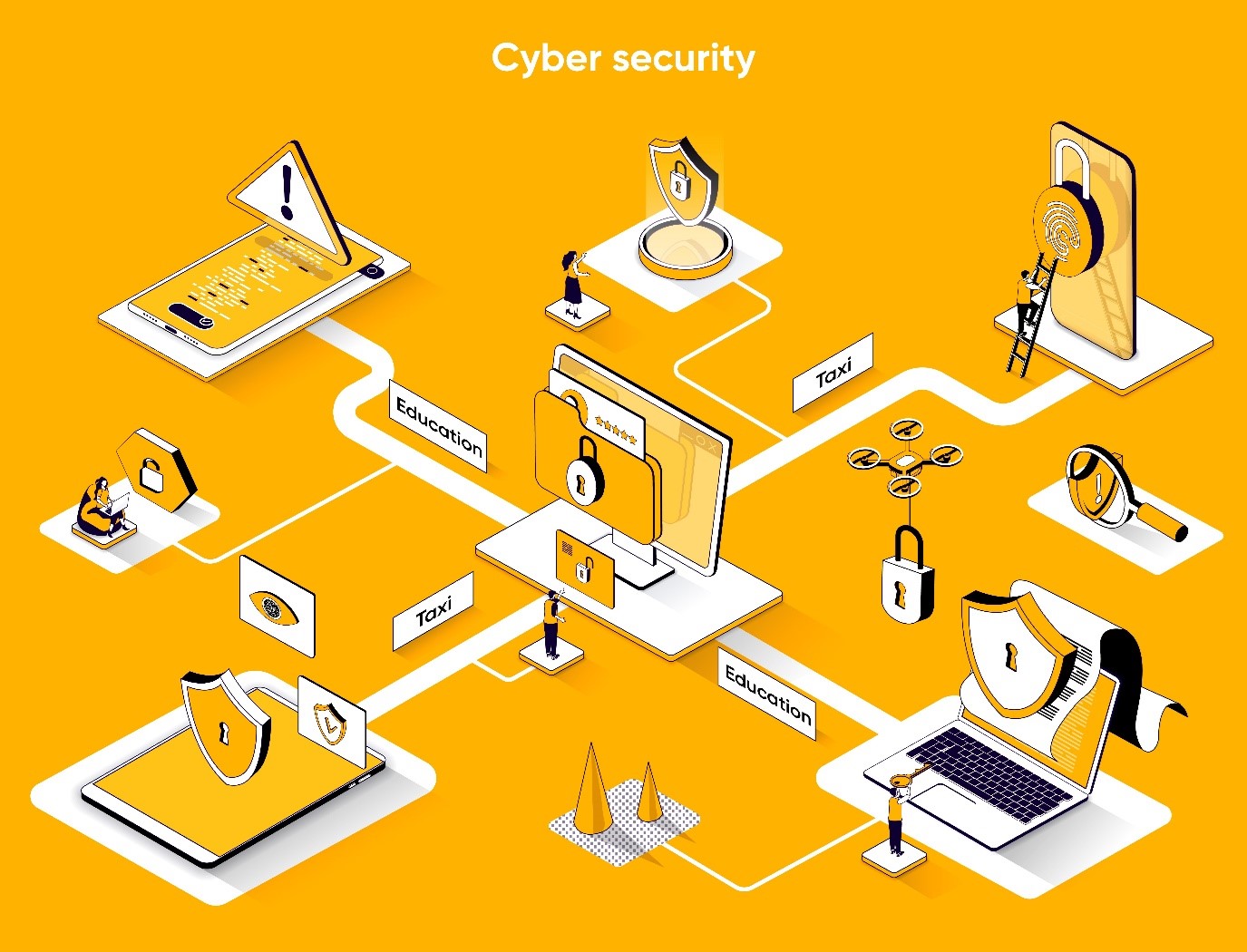
It’s important to understand where security challenges come from, so they can be addressed to help you better secure your business.
1. Increasingly Sophisticated Cybersecurity Threats
One of the biggest cybersecurity challenges is the growing sophistication of cybersecurity threats. Not too long ago, most threats could be avoided by scanning floppy disks using antivirus software immediately after inserting them since the attack surface was very small.
Today, threats come from unexpected directions, and they’re designed to get past even the most advanced controls. Ransomware attacks have made headlines on multiple occasions in 2021, with approximately 37 percent of global organizations becoming their victims.
Ransomware attacks, however, wouldn’t be nearly as widespread as they are if it wasn’t for the evolution of phishing, a social engineering technique used by cybercriminals to trick a victim into revealing sensitive information or deploy malicious software on the victim's infrastructure.

In 2021, many phishers have been using carefully crafted emails that include personal information and facts gathered from social media, as well as the web in general, to make their messages indistinguishable from legitimate emails. The same phishers are not afraid to use the phone instead of email to put even more pressure on their victims.
How to overcome this challenge?
To combat increasingly sophisticated cybersecurity threats, organizations should make cybersecurity their top priority. Smart investments in technology defenses combined with cybersecurity awareness training can make a world of difference, and neither has to be expensive.
2. Adapting to a Hybrid Workforce
When the pandemic forced employees to leave their offices almost two years ago, remote work was a novelty for many people, employers included. It didn’t take a long time for the pros and cons of this work arrangement to become obvious, with the pros greatly outweighing the cons for many.
This year, organizations have been trying to figure out how to allow employees who prefer to work remotely to do so without compromising their security. What makes their new hybrid work environments particularly difficult to protect is the lack of a clearly defined network perimeter.
When some employees work from the office and some from remote locations, traditional perimeter defenses, such as firewalls, become much less effective when it comes to stopping malware from traveling all the way from an edge device to, let’s say, an email server.
How to overcome this challenge?
To protect a hybrid workforce, organizations need to move away from the traditional castle-and-moat approach to cybersecurity. Modern endpoint protection solutions can be easily deployed on individual endpoints (laptops, PCs, smartphones, and tablets) to protect them regardless of their physical location.
The good news is that most cybersecurity regulations are based around similar controls and best practices, so achieving compliance with a set of standards for safeguarding sensitive data, such as NIST SP 800-171, is half the battle.
3. Third-Party Data Breaches
It’s estimated that 51 percent of organizations have experienced a data breach caused by a third party. The number wasn’t always so high, but the ongoing migration of applications, platforms, and infrastructures to the cloud has been driving its growth.

Attracted by the numerous benefits of cloud computing, such as its cost savings, flexibility, and improved disaster recovery, organizations large and small have entered into partnerships with all kinds of cloud vendors without always addressing the risks such partnerships might introduce.
Gartner predicted the cloud would become a major source of data breaches back in 2019, and the technology research and consulting company believes that 90 percent of the organizations that fail to control public cloud use will inappropriately share sensitive data through 2025.
How to overcome this challenge?
While increased security of often touted as one of the biggest benefits of cloud computing, not all cloud vendors are equally secure, so organizations must choose their partners carefully. They should also strive to consolidate vendors to reduce cloud complexity and save costs.
4. Lack of Cybersecurity Expertise and Experience
As we’ve explained earlier in this article, cybersecurity threats are becoming more and more sophisticated, and keeping them at bay is no longer as straightforward as it once used to be. This is a problem for everyone, but small organizations have it worst because the salary expectations of cybersecurity professionals are too steep for their limited budgets.
As a result, they often assign cybersecurity a low priority and resort to hoping that its negligence won’t end up being a costly mistake. Unfortunately, that’s exactly what often happens, and the cost of a data breach has never been higher.

What’s more, small organizations that have undergone transformation are seen by cybercriminals as attractive targets that can be compromised with much less effort than large enterprises.
How to overcome this challenge?
To overcome their lack of cybersecurity expertise and experience, organizations can partner with managed IT service providers like us at BCA. With our help, addressing this year’s and future top cybersecurity challenges won’t be a problem. Schedule a free consultation today and give us the opportunity to explain what makes us the right choice for your organization.

